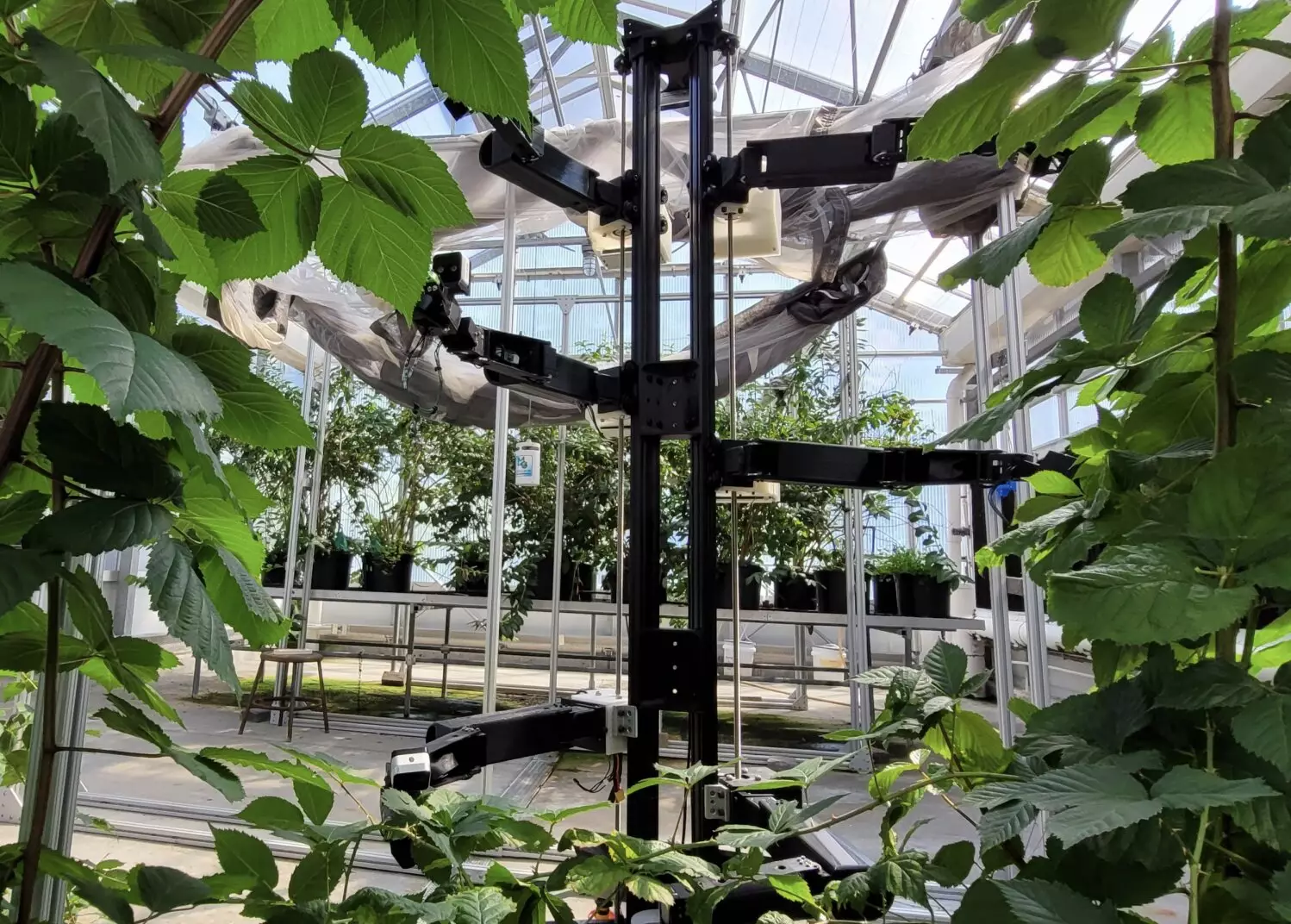In recent years, the decline of natural pollinators, such as bees and certain types of insects, has become a cause for concern as it directly impacts food security on a global scale. With the extinction of numerous animal species and the endangerment of thousands more, the need for alternative pollination methods has never been more urgent.
To address the challenges posed by the decreasing population of natural pollinators, engineers have turned to the development of pollination robots. These robotic systems are designed to autonomously disperse pollen in the air, potentially revolutionizing the way we approach pollination in agriculture.
Researchers at West Virginia University have been at the forefront of this innovation, introducing the Stickbug robot as a precision pollination solution. Unlike its predecessors, Stickbug boasts six robotic manipulators that can independently tackle different pollination tasks, making it a versatile and efficient tool for pollination.
Stickbug utilizes a compact holonomic Kiwi drive for navigation in narrow greenhouse rows, a tall mast for reaching plant heights, a detection model and classifier for identifying specific flowers, and a felt-tipped end-effector for contact-based pollination. These features combined make Stickbug a powerful tool for precision pollination.
The researchers at West Virginia University conducted a real-world experiment to evaluate Stickbug’s performance. Placed in front of an artificial bramble plant, the robot’s mission was to pollinate as many flowers as possible within a 5-minute period. The results showed that Stickbug could attempt over 1.5 pollinations per minute with a 50% success rate, showcasing its potential for efficient pollination.
With the success of Stickbug in the initial experiment, the researchers are hopeful that the robot could soon be tested on real plants to validate its feasibility. The ultimate goal is to introduce Stickbug in real-world settings where natural pollinators are scarce, ensuring that harvests are maintained and food security is preserved.
The development of precision pollination robots like Stickbug represents a significant step towards securing our food sources in the face of declining natural pollinators. With further advancements and real-world applications, these innovative solutions have the potential to address the challenges of modern agriculture and pave the way for a more sustainable future.


Leave a Reply